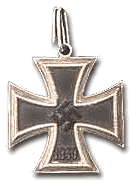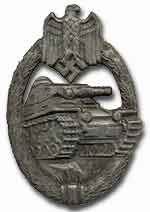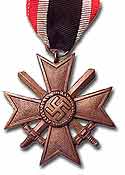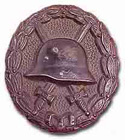





SS-Hauptsturmführer
Karl Bastian
II./SS-Pz.Gren.Rgt.21
10.SS-Pz.Div. "Frundsberg"
II.SS-Pz.Armeekorps
Träger
des Ritterkreuz des Eiserne Kreuze (no.3474)






Considering the poor weather conditions and Allied attacks from Baron against Hill 112, south of Caen, that proved unsuccessful, the following days leading up to 21 July remained relatively quiet in the sector of the 10.SS-Pz.Division. On the other hand, SS-Hauptsturmführer Karl Bastian, commander of the II./SS-Pz.Gren.Rgt.21, was reluctant to wait for more action. As a cadre member, Hstuf.Bastian joined the Frundsberg Division on 8 January 1943 as a company commander, 7./SS-Pz.Gren.Rgt.21.
In 1932, Bastian entered the Hitler Jugend. From 1933-1935, he completed his compulsory Reichsarbeitsdienst (RAD). Shortly thereafter, Bastian enlisted in the Schutz-Staffel and assigned to the 2./SS-Totenkopfstandarte "Ostfriesland." A little over one year later, Bastian was promoted to SS-Unterscharführer. By a decree, he was ordered to the Wehrmacht from 11 January 1936 to 10 January 1938, where he served with the 5./Inf.Rgt.61 and participated in the occupation of Ostmark and Sudetenland. After his release from the Wehrmacht, he returned to the 3./SS-Totenkopf-Standarte "Brandenburg." As of January 1939, while serving as a platoon commander, Bastian participated in the occupation of Böhmen and Mähren. During the same year, Bastian was transferred to the newly organized SS-Totenkopf Division (3.SS-Pz.Div.) and assigned to the 5./SS-Totenkopf-Inf.Rgt.2.
In December 1939, he attended the Platoon Leaders Course at the Jägerbatallion in Kassel. As a platoon commander, Bastian participated in the campaign against the Low Countries in Holland, Belgium, and ultimately France. Having been decorated with both the Iron Cross 2nd and 1st Classes during the campaign in 1940, the Tank Assault Clasp, and the Wound Badge, he was ordered to the Junkerschule at Bad Tölz. After successfully completing the Junkerlehrgang (officer course), he remained at Bad Tölz until 8 January 1943, when he was ordered to the Frundsberg Division as a company commander in the 7./SS-Pz.Gren.Rgt.21.
In the morning on 20 July, the 9.SS-Pz.Div. had established command between Esquay and the Odon River and began disengaging, once higher orders had been received by the II.SS-Pz.A.K. that transferred the 9.SS to the I.SS-Pz.A.Korps. In this respect, the reduction of the sector of the 10.SS-Pz.Div. that occurred during the night 18-19 July was counterproductive; the Frundsberg Division became heirs to a sector that reached Bouchy, once it was ordered to relieve the engaged elements of the 9.SS-Pz.Div. with the Pz.Gren.Rgt.21. Once again, the left neighbor became the 277.Inf.Div. as the relief was carried out without incident. Thus, all the Panzergrenadier-Bataillons of the 10.SS-Pz.Div. were back in the main line of battle.
In the evening on 21 July 1944, Hstuf.Bastian was situated along the main line of battle and across from a British stronghold. Comprised of a company of approximately 120 men, the Allies occupied improved prepared positions within basements and bunkers. Nonetheless, by his own initiative, Hstuf.Bastian organized a small group of men from the 6.Kp., supported by a small contingency of Sturmgeschütze (StuG), and personally led an attack that effectively made use of the terrain to infiltrate and destroy the Allied position. Confidently leading by example and storming forward with a grenade in hand, Bastian rallied his men forward to ensure for a successful pincer-attack that did not allow any of the 120 British to escape. Sixty-eight men and one officer were captured during the operation.
The capture of the Allied stronghold significantly reinforced the German defense on Hill 112 and, after the Allies had made successful gains east of the Orne on 20-21 July, Allied attention was diverted to the west bank of the Orne. Moreover, Allied intensions were uncovered based on captured documents (Ic), the number of captured soldiers, weapons, and equipment. The operation also documented the necessary skill and demeanor for such an attack, out from the defense, which raised the morale and self-confidence of the troops in the defense. On 23 August 1944, Haupsturmführer Karl Bastian was decorated with the Knight's Cross to the Iron Cross.

Copyright Stenger Historica 2004